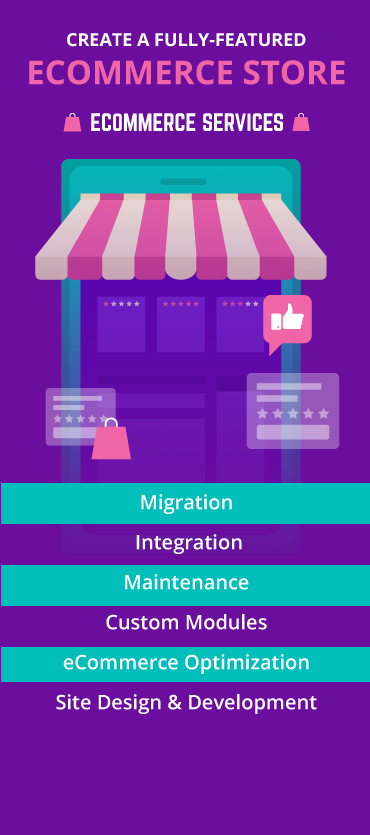Magento is the premier platform that has extensive features and powerful extensions to create and run a successful eCommerce store.
It has been a perfect fit for all businesses that want to streamline and optimize their online store for higher revenue.
The various versions of Magento Commerce enable you to deliver personalized shopping experiences to your customers.
And even though every version has its own set of capabilities, they still get outdated at some point.
A recent example is Magento 2.3, which became outdated on September 8, 2022. While it is still accessible, it will no longer receive technical support officially from Magento.
This means you’ll be unable to operate on new versions of PHP, switch hosting platforms, and protect your website.
To avoid this fate for your online store, it’s time to upgrade to Magento 2.4.
In this blog post, we delve deeper into why you must adopt the Magento 2.4 version to drive eCommerce success.
The Risks of Sailing With Outdated Magento 2.3

It is advisable to upgrade to the latest Magento version, as Magento 2.3 has become outdated and unsupported which poses significant risks to your online business.
Some of the challenges include:
- Security Vulnerabilities
By sticking with Magento 2.3, you expose your online store to potential security vulnerabilities. As this version is no longer supported with official updates and security patches, any emerging threats or vulnerabilities will remain unaddressed. Moreover, the system becomes more susceptible to attacks from hackers that put customer data, transactions, and your brand reputation at risk. By upgrading to Magento 2.4, you have the latest security updates and patches that protect your online store/customer data from severe risks or consequences.
- Performance and Stability Issues
Over time, older versions of software can become slower and less stable compared to their updated counterparts. Magento 2.3 may experience performance issues and slower page load times that affect user experience and decrease conversion rates. Whereas upgrading to Magento 2.4 brings performance optimization, that results in faster page load times, improved scalability, and overall better website performance. Furthermore, the latest version’s codebase is optimized to handle larger volumes of traffic for a smooth user experience even during peak periods.
- Lack of Features and Functionality
After becoming outdated, Magento 2.3 lacks several important features and enhancements like advanced reporting capabilities, GraphQL support, PWA studio tools, etc. This impacts user experience and the growth of your eCommerce business. Upgrading to Magento 2.4 grants access to a wide range of new features and functionality. With the availability of advanced features, you can enhance the shopping experience, expand your online presence, and stay ahead of the competition.
- Compatibility and Integration Issues
As time progresses, compatibility between different software components can become a challenge. Using Magento 2.3 might lead to compatibility issues with newer technologies, third-party extensions, and integrations. This can result in errors, glitches, and inefficiencies within your online store. Magento 2.4 offers improved compatibility and seamless integration with the latest technologies, extensions, and third-party services. This ensures that your online store operates smoothly, without any compatibility issues or disruptions.
Merchants who delay Magento upgrades may encounter various compatibility issues that can affect the functionality and performance of their online stores.
Here are some common examples:
- Third-Party Extensions and Themes: As Magento reaches its end-of-life, it will no longer receive any support from Adobe. This means that any third-party extensions or themes that are only compatible with Magento 2.3 will no longer be updated or supported.
- Payment Gateway and Shipping Integration: The outdated Magento version may not be compatible with the latest APIs and protocols required by payment gateways or shipping providers. This can lead to issues with payment processing, shipping calculations, and order fulfillment.
- Customizations and Code Changes: Any customizations or code changes that you have made to Magento 2.3 may also no longer work after EOL. This is because the Magento codebase will continue to evolve and change after EOL, and your customizations may no longer be compatible with the newer version.
- Mobile Responsiveness and Progressive Web Apps (PWA): Delayed upgrades may result in compatibility issues with mobile-responsive themes and Progressive Web Apps (PWA). This can lead to a poor mobile user experience that impacts conversions and customer satisfaction.
Conclusion
Using Magento 2.3 is like trying to navigate a complex maze with an outdated map. It’s time to bid farewell to this obsolete version and embrace the advantages of the latest Magento release.
Upgrading to the latest version of Magento is a necessity for businesses seeking to thrive in the ever-evolving eCommerce landscape. With enhanced security measures, improved performance, and a plethora of new features and functionality, Magento 2.4 empowers you to deliver exceptional experiences and win customers.











